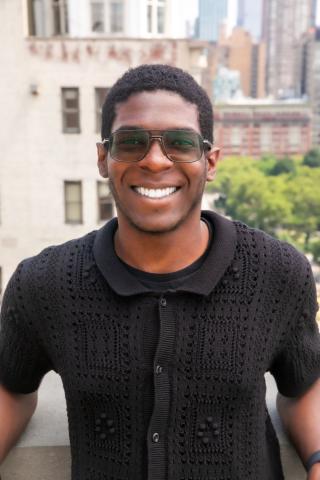Apr 09, 2025

As a NASA Pathways intern, Gates Scholar, and G. Wayne Clough Tech Promise Scholar, J’Avani Stinson has devoted himself to the tenets of progress and service through his research, academics, and extracurriculars. Fueled by a lifelong love of science and devotion to helping others, Stinson, a second-year biology major from Stone Mountain, Georgia, hopes to use the generosities afforded to him to continue improving society.
Specifically, he hopes to obtain an M.D. and Ph.D. to study chronic pediatric diseases, a goal first discovered during his sister’s own diabetes diagnosis when she was 9 years old.
“Seeing the way my sister was treated, and later how some friends of mine with Sickle Cell or my aunt with leukemia were treated, just hearing stories and witnessing how they’ve been pushed aside by the healthcare system,” said Stinson. “All of that has inspired me to help get to the root of these problems, and find ways to better alleviate them, because it’s a lot of money, time, and pain that I’ve seen people go through.”
Stinson has undertaken several different research projects over the years, beginning in high school with the development of a research project that would use mathematical principles to identify the best strategy for playing UNO. With each step since then, he has explored research topics such as cellular mechanics, computational biology, and finally, neural systems and microgravity.
His most recent position at NASA proved especially interesting, as it was his first position strictly studying biology. Space is also a unique environment to study the components of disease, particularly cancer.
“Space has different properties than Earth, such as stronger radiation and microgravity,” said Stinson. “And cancer cells exhibit different behaviors, so, one of the things I and other researchers are looking at is what we can learn about disease on Earth based on cellular behaviors we see in space.”
After recently completing his first research rotation, Stinson hopes to return this summer to work in NASA’s Food Lab, which focuses on developing meals optimized for nutrition in space.
To read the full story, click here.

